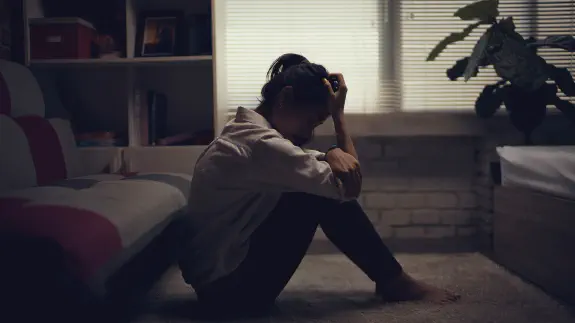Sex and Gender-based Analysis of this topic
Definition
Clinical depression is typically diagnosed when feelings of worthlessness, self-blame, sadness, disappointment, and/or emptiness last for several weeks and interfere with an individual’s work and social life [1]. Bipolar disorder, formerly referred to as manic depression, is a type of clinical depression that results in extreme mood fluctuations [2]. Seasonal affective disorder (SAD) is a type of clinical depression that appears at certain times of the year, most noticeably during the winter months when individuals have less exposure to natural light [3]. Depression during the postpartum period can include the baby blues (occurs in 50-80% of women, starts within 1 to 3 days after delivery, and may last from a few days up to a number of weeks), postpartum depression (occurs in 3-30% of women and may occur anytime between birth and 6 months post-partum and last for up to one year), or postpartum psychosis (a more severe form of depression that occurs in approximately 1 in 1000 births) [4].
Depression often results in changes to sleeping and eating patterns, difficulty concentrating, loss of interest in usual activities, and decreased sex drive, to name a few symptoms. Women experience higher rates of depression than men with estimates that women experience depression 2 to 3 times more than men [5].
Sex Issues
Differences in serotonin levels are thought to account for the difference in men’s and women’s rates of depression [6]. Women with depression are more likely to report bodily symptoms, such as fatigue and disturbances to appetite and sleep patterns [7]. One of the strongest risk factors for having depression is the presence of a medical illness, such as heart disease, cancer, or HIV/AIDS [8]. For example, post-stroke depression is common among women. Depression is also significantly related to an increased risk of women developing heart disease, but not men [9]. Physiological evidence suggests that women may absorb, distribute, and eliminate antidepressants differently than men, which can result in the need for numerous dosage adjustments compared to men. Furthermore, monthly hormone cycles may affect how antidepressants are absorbed by women [10].
The Canadian Mental Health Association estimates that approximately 30-70% of women experience premenstrual syndrome (PMS). About one in 20 of these women experience symptoms that are so severe that day-to-day functioning and relationships are comprised, known as pre-menstrual dysphoric disorder (PMDD; commonly known as PMS) [11].
Gender Issues
Before the age of 13, depression rates for boys are girls are equivalent, but after the age of 13, men’s and women’s rates diverge [12]. Women become depressed for a number of reasons including negative body image and stresses of paid and unpaid work [13]. Women are more likely to develop alcohol problems within a few years of their first depressive episode compared to men [14]. Women who suffer from depression are more likely to be unmarried and have a younger age at onset. Despite the higher prevalence of depression in women, data from the National Population Health Survey indicates that men are more likely to experience a depressive episode following the dissolution of a marriage or relationship compared to women [15].
Postpartum depression is an important health concern for women who have experienced depression, as well as women who either have severe PMDD, lack social support, or experience stressful events during the pregnancy or after delivery [16].
Diversity
According to data from the Canadian Community Health Survey, individuals who perform shift work, particularly evening or night shifts, and who work less than 30 hours per week, are more likely to be depressed [17]. This may put women at a greater risk of being depressed as women are more likely to work part-time shift work, particularly when caring for small children and other dependants.
Other groups who are at particular risk for developing depression include individuals who are homeless or at risk of experiencing homelessness and both youth and adults involved in the criminal justice system [18], as well as minority groups. Mental health is especially problematic for Aboriginal women due to the long-term effects of colonization, which is manifested in inadequate housing and lack of access to appropriate healthcare [19].
Critique
Mental health deficits can manifest themselves in many areas of one’s life that may not be obvious. Screening tools and population health surveys that ask about depression need to include a variety of questions on both mental and physical health in order to assess the complex nature of depression. For example, individuals of South Asian descent (individuals with a country of origin such as India, Pakistan, Sri Lanka, Bangladesh, or Nepal) may report physical illnesses which may be missed in depression screening tools and national population health surveys in Canada [20]. Population surveys that ask about previous depressive episodes may not present an accurate representation of an individual’s present depressive symptomology.
